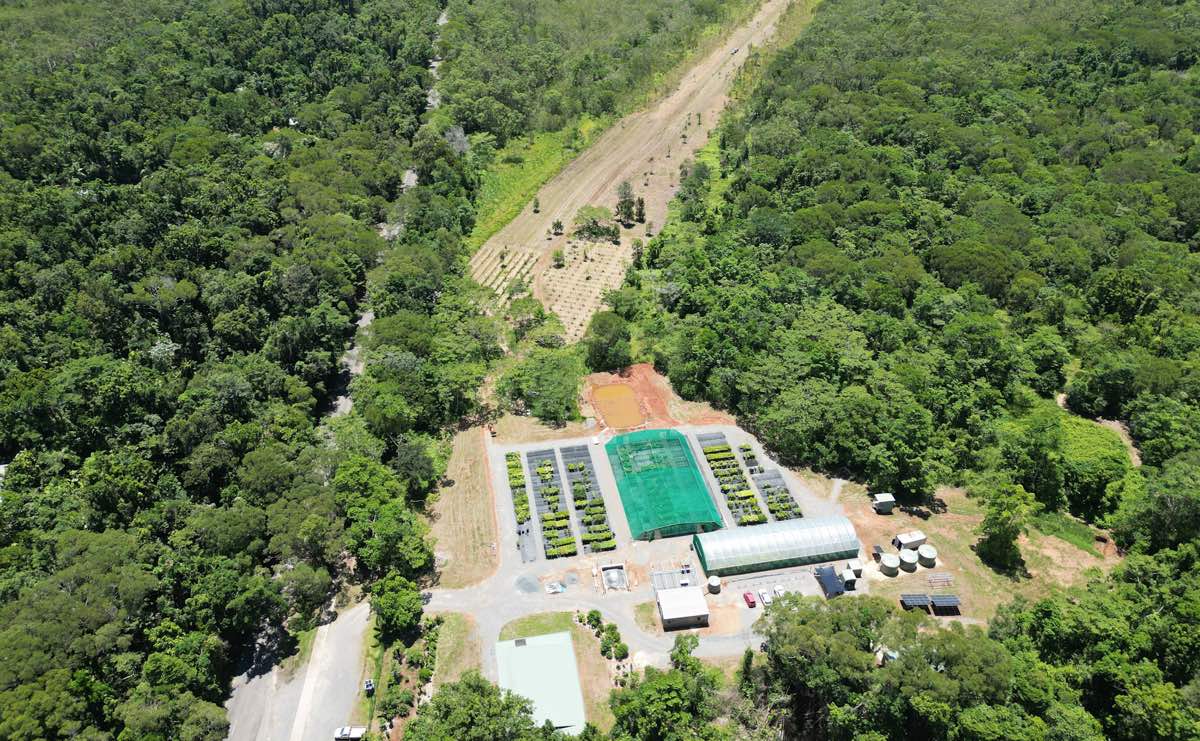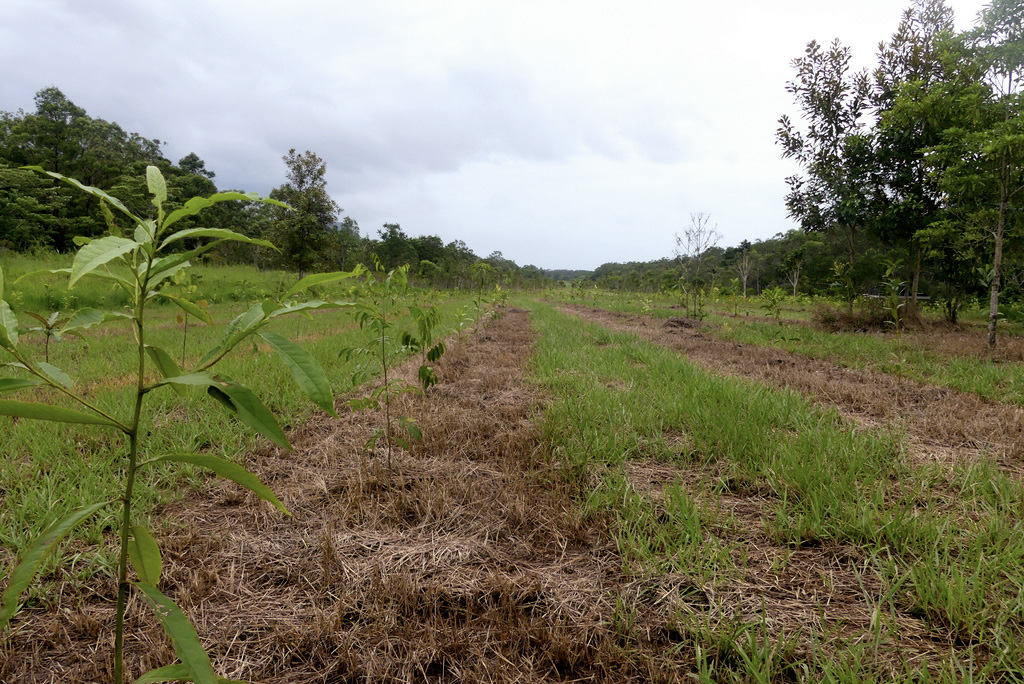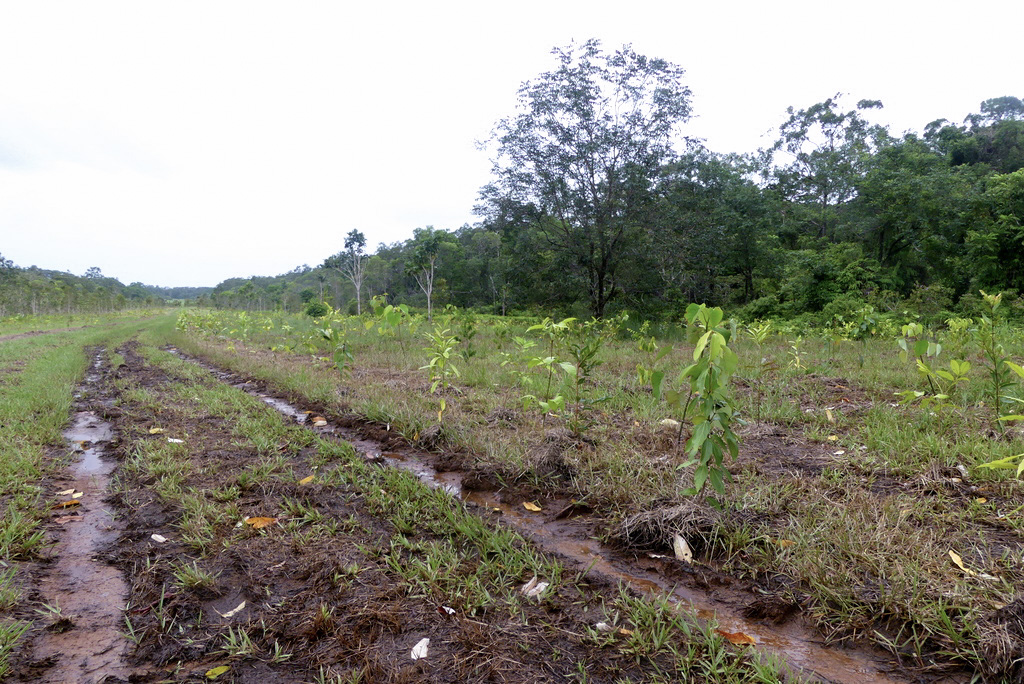What does it take to Rescue a Rainforest?
Here at Rainforest Rescue we believe in a holistic approach to ensure that the majestic Daintree Rainforest is protected forever. This approach includes not only protecting what’s already there, but also growing back the rainforest that has been lost.

Drone view of the Cow Bay nursery and restoration taking place at the old airstrip runway
One fascinating piece of land is very close to our Daintree centre of operations, the Rainforest Rescue Native Nursery.
To the north of this is the now defunct Cow Bay Airstrip . The nursery and airstrip are part of a larger property, covering 16ha, bordering the Wet Tropics World Heritage Area and Daintree National Park. Viewed from above, the airstrip is a cleared scar, cut through the forest in a north-east/south-west direction.
When the property was in danger of becoming an active airstrip again, we were concerned over the pressure it would put on the surrounding World Heritage Area.
Instead, we saw the potential for restoration and healing the scar. And being so close to our nursery, it was also an opportunity for us to trial planting techniques to make sure we can grow trees more efficiently.
Putting nature back in control
As a restoration project, the airstrip provides challenges typical of any land used for human activity. The compacted ground was mixed with rubble, designed to provide a relatively flat surface for aircraft, not for a dense rainforest to thrive upon!
Airstrips are rarely known for their natural biodiversity, so we’re working with a poor environment showing evidence of desertification. This is why soil health and monitoring drainage flow through the area feeds into our considerations for plant choices, spacing and species succession.
As you can see, the different factors of a site mean we take a conditional approach to planting, rather than using a universal method. You may even wonder if this causes our restoration team to do extra work and creates inefficiencies. On the contrary, our focus is on providing the best possible chance for the rainforest to ‘take over’ its own restoration. In this way, we’re encouraging the cycle of ecological succession which happens in wild places.
A chance to learn and optimise
We’re always looking at ways in which we can improve our methods. After all, positive outcomes are what the Daintree needs if we are going to be able to protect and restore it forever. And with the environmental challenges we’re facing, this can’t happen soon enough.
So, we’re testing two approaches with their own methods, benefits and challenges:

Approach 1: The Spacious Path
(1st image: The Spacious Path approach for tree planting, Feb 2024)
In the first approach, we’re planting the trees out in rows that are 2.6m apart and the trees spaced at between 1.8 – 2m. With more space between the trees, we have better access to use machinery for weed maintenance. This approach needs less resources and time spent maintaining the plantings until they mature but will take longer before a canopy closure takes place.

This approach needs less Manpower
Approach 2: The Dense Thicket
(2nd image: The Dense thicket approach for tree planting, Feb 2024)
In contrast, the second approach involves tighter spacing. Here we’re only allowing for 1.5m between rows and trees planted on average every 1.7m apart. Here, the emphasis lies on maximising tree density to outcompete weeds and achieve rapid canopy closure. But this means we must manually maintain the weeds until natural competition among trees starts to take place.
By documenting and analysing these methods over the course of two years, we’re aiming to identify what’ll allow for the fastest and strongest growing rainforests. And rescue more of the fractured Daintree in the process.
#TreesAreTheAnswer #TheBestTimeIsNow
Want more good Rainforest news in your life?
Subscribe to our eNews | Follow us on Instagram | Like us on Facebook | Subscribe to our YouTube channel
Help Protect Rainforests Forever
Donate to Protect Rainforests Forever | Become a Rainforest Guardian for as little as $2 a month | Partnership Options

